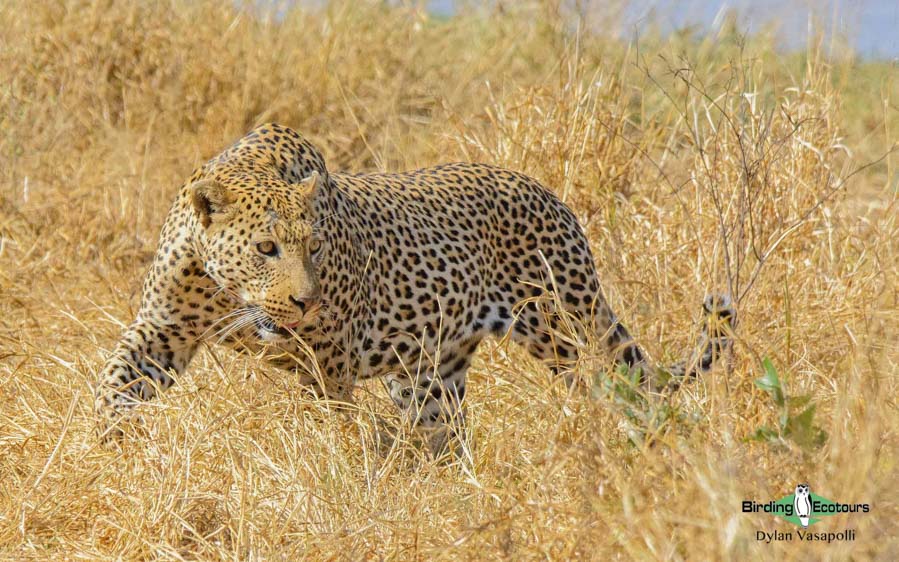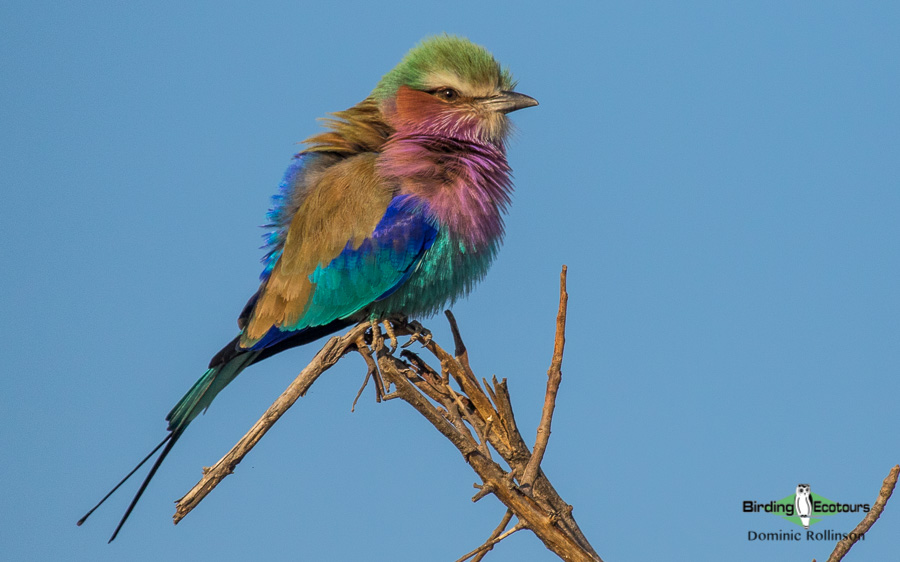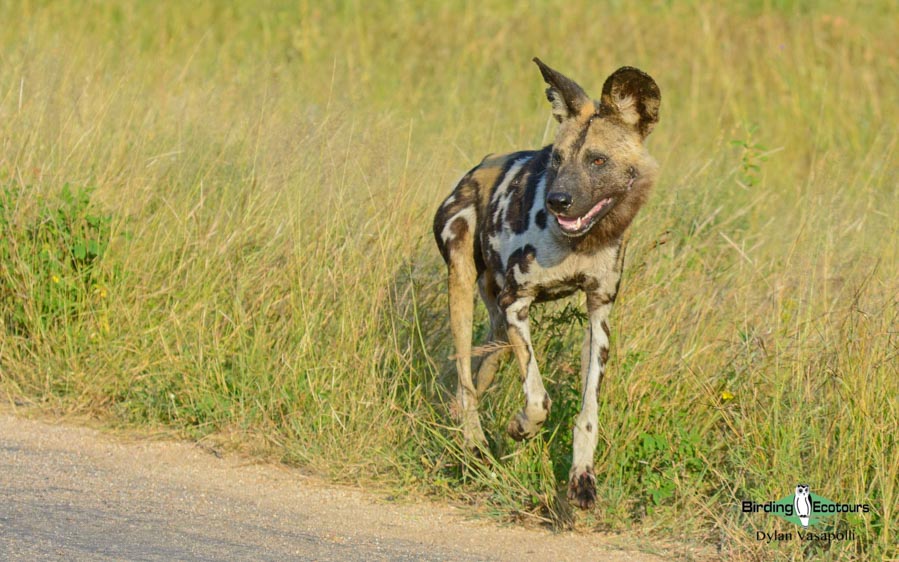Go to All Blogs | Best time to visit Blogs | Best time to visit South Africa Blog | South African Birding Tours | South African Day Tours | Kruger and Escarpment Birding Tour | All our birding tours
This blog was last updated on 30 June 2025.
The best time for birding the Kruger National Park is arguably during the summer months (November through February). But many factors come into play when deciding which season to visit Kruger in, such as if you prefer cool weather, if other wildlife (apart from birds) is important to you, etc. In the article below, we provide some detailed information to help you decide when you should visit Kruger, a famous South African national park that is the size of a small country!
The usual recommendation for “when to visit the Kruger National Park for wildlife” is May through September (the dry season), but this applies largely to “Big 5 safaris” and standard wildlife photographic tours. The issue is that when you also have a significant birdwatching focus, this recommendation might change (depending on things discussed below). The reasoning behind the usual May to September advice is that animals are more concentrated around waterholes and rivers during the dry season than they are during the rainy season, when a myriad of ephemeral pools and waterholes become available, making megafauna more dispersed and tougher to locate, and that there is less vegetation and long grass for them to hide in.
There’s a lot of truth in the idea that the dry season is good, and you should certainly have a good wildlife experience to Kruger traveling during the months of May through September. Toward the end of this period is better, as it gives more time for seasonal waterholes to dry up and for long grass to die off, concentrating wildlife near the perennial water bodies and making them more visible as there’s less grass and other vegetation to hide in. So, July through September is arguably the ideal time, from this point of view (basically if you’re after a conventional wildlife safari).

Leopard is active throughout the day in winter and is more easily seen then because the grass is shorter and the animal has to stay close to perennial waterholes and rivers.
May through August is the southern winter (and September is early spring), which means cool nights and mild days. The big advantage of the cooler temperatures even during the day is that mammals are active throughout the daylight hours and temperatures are pleasant enough (for us, the humans!) to do game drives all day long. In summer it’s more important to start safari drives at the crack of dawn, then to rest for much of the day when its too hot for both humans and animals to be very active, then to do a late afternoon/early evening birding/safari drive again. During these times, when its cooler, the animals are more active.
Now to start questioning some of the usual dogma. Within weeks after the first rains fall in Kruger (these usually start falling in October) the “veld” (as South Africans call the savannah) “greens up”, the grass becomes beautifully green, and leaves sprout on the thorn trees. Winter, on the other hand, is brown and dull, and summer is much more pleasant and green (although animals have more greenery to hide in). Having said that, rollers and other brightly colored birds of the Kruger National Park really stand out better against a brown surrounding!

In summer the iconic Lilac-breasted Roller is joined by a couple of its cousins, European and Broad-billed Rollers.
The big issue for birders (as opposed to those who only want to see mammals) is that a large number of additional bird species start arriving in Kruger in spring, and they stay until late summer or early fall (they’re largely present from October through March, less so in September and April, depending on the species, though). So there are a quite substantially larger number of bird species in Kruger during the rainy season, and you can augment your bird count by visiting then. A couple of extra roller species arrive, as do many cuckoo species, as just a couple of examples. Some of these arrive from Eurasia/the Palaearctic, whereas others arrive from central Africa (the latter are the intra-African migrants).
Good news is that we still see the Big 5 and a lot of the smaller animals throughout the summer, even if they’re not quite as obvious. Also we tend to run a lot of our trips in October when the rains are just starting, and animals are often still concentrated around waterholes etc.
Also, many birds molt into a much more spectacular breeding plumage in summer. Widowbirds, whydahs, bishops, and weavers become amazingly gaudy and spectacular in summer, and some of them are just LBJs (Little Brown Jobs) in winter. This applies even more so for those people joining our Kruger and Escarpment birding and wildlife tour. This trip includes some high-altitude areas to the west of Kruger that become full of spectacular widowbirds with stunning colors and incredibly long tails.

African Wild Dog has declined in South Africa, but we still find it on some of our Kruger Park birding safaris.
Will the rain interrupt your nature viewing if you do visit in summer? The short answer is no. Rain in the Kruger National Park usually only falls for a couple of hours in the afternoon and rarely lasts all day long. So it doesn’t really interrupt the bird-watching and wildlife viewing. And a spectacular electrical storm in Kruger can be one of the most memorable experiences to have anyway. A thunderstorm brings a very pleasant relief from the heat and also sometimes initiates an alate/flying ant emergence – these usually attract a wide variety of birds, even ones that don’t usually eat insects but which can’t resist these highly nutritious flying termites.
Many of you will want to visit other parts of South Africa as well. A lot of people combine a visit to the Kruger National Park with Cape Town, for example. Our more comprehensive blog covering timing for birding and wildlife holidays to South Africa (not just Kruger, like this article), should in that case also be read before you decide on when to visit – please do see here.
We offer all our South Africa birding and mammal tours in the months we reckon are ideal. We run many different trips to South Africa, all shown here. Please do note that sometimes the month we’ve chosen is a compromise between what’s best in different parts of this large country. For example, we run a lot of our eastern and western South Africa trips in October; September is a bit better for the Cape and November a bit better for the east (e.g. Kruger and the nearby greater Drakensberg escarpment), so October is a good compromise to get the best of both worlds.
